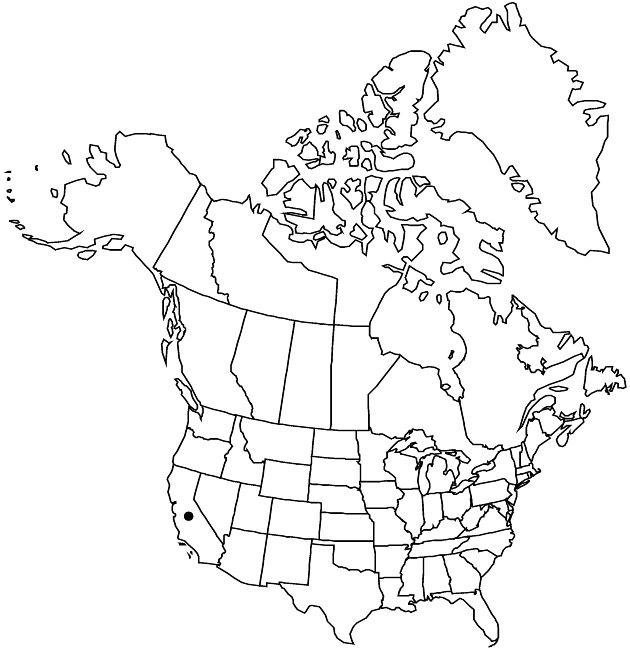Difference between revisions of "Lasthenia minor"
Univ. Calif. Publ. Bot. 40: 80. 1966.
FNA>Volume Importer |
FNA>Volume Importer |
||
| Line 30: | Line 30: | ||
|elevation=0–700 m | |elevation=0–700 m | ||
|distribution=Calif. | |distribution=Calif. | ||
| − | |discussion=<p>Lasthenia minor is variable; coastal plants tend to have lower stature and broader leaves and tend to flower later in the year. Inland populations were once common in the San Joaquin Valley and are now harder to find as grasslands become cultivated, grazed, or built upon. Epappose plants are common and sometimes comprise entire populations.</p> | + | |discussion=<p><i>Lasthenia minor</i> is variable; coastal plants tend to have lower stature and broader leaves and tend to flower later in the year. Inland populations were once common in the San Joaquin Valley and are now harder to find as grasslands become cultivated, grazed, or built upon. Epappose plants are common and sometimes comprise entire populations.</p> |
|tables= | |tables= | ||
|references= | |references= | ||
| Line 54: | Line 54: | ||
|publication year=1966 | |publication year=1966 | ||
|special status= | |special status= | ||
| − | |source xml=https://jpend@bitbucket.org/aafc-mbb/fna-data-curation.git/src/ | + | |source xml=https://jpend@bitbucket.org/aafc-mbb/fna-data-curation.git/src/8f726806613d60c220dc4493de13607dd3150896/coarse_grained_fna_xml/V19-20-21/V21_869.xml |
|tribe=Asteraceae tribe Heliantheae | |tribe=Asteraceae tribe Heliantheae | ||
|subtribe=Asteraceae (tribe Heliantheae) subtribe Baeriinae | |subtribe=Asteraceae (tribe Heliantheae) subtribe Baeriinae | ||
Revision as of 15:37, 18 September 2019
Annuals, to 35 cm (herbage not sweetly scented). Stems erect, branched distally, ± woolly, especially distally. Leaves broadly to narrowly linear, 20–120 × 1–10 mm, margins entire or irregularly toothed or lobed (lobes to 1.5 mm), faces glabrous or villous. Involucres hemispheric, 4–6 mm. Phyllaries 7–14, oblong to ovate, hairy (especially at margins). Receptacles conic, muricate, glabrous. Ray florets (8–)13; (corollas light to golden yellow) laminae oblong, 4–8 mm. Anther appendages ovate or elliptic, acute (style apices ± deltate with apical tufts of hairs and subapical fringes of shorter hairs). Cypselae black, narrowly clavate, 2–2.5 mm, glabrous or hairy; pappi 0, or of 2–3(–4) brown or white, lanceolate or subulate, aristate scales plus 4–5+ shorter, ± truncate, fimbriate scales. 2n = 8.
Phenology: Flowering Mar–Jun.
Habitat: Grasslands, coastal and inland
Elevation: 0–700 m
Discussion
Lasthenia minor is variable; coastal plants tend to have lower stature and broader leaves and tend to flower later in the year. Inland populations were once common in the San Joaquin Valley and are now harder to find as grasslands become cultivated, grazed, or built upon. Epappose plants are common and sometimes comprise entire populations.
Selected References
None.
